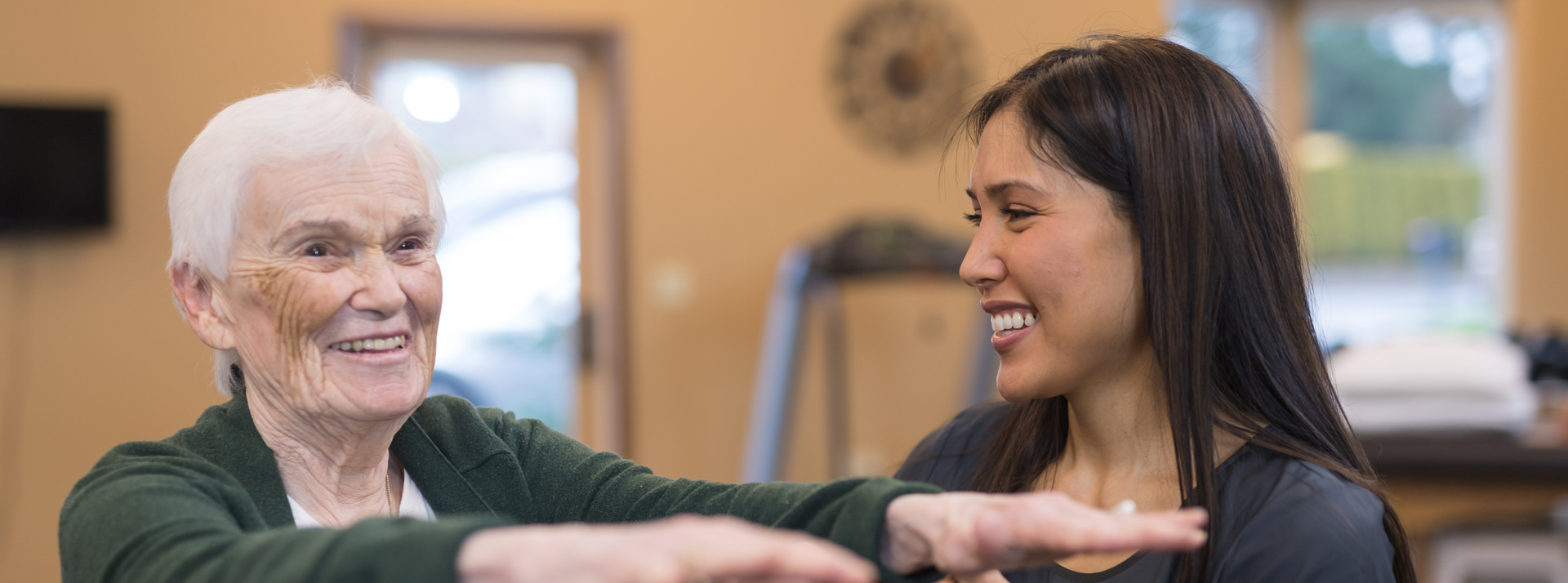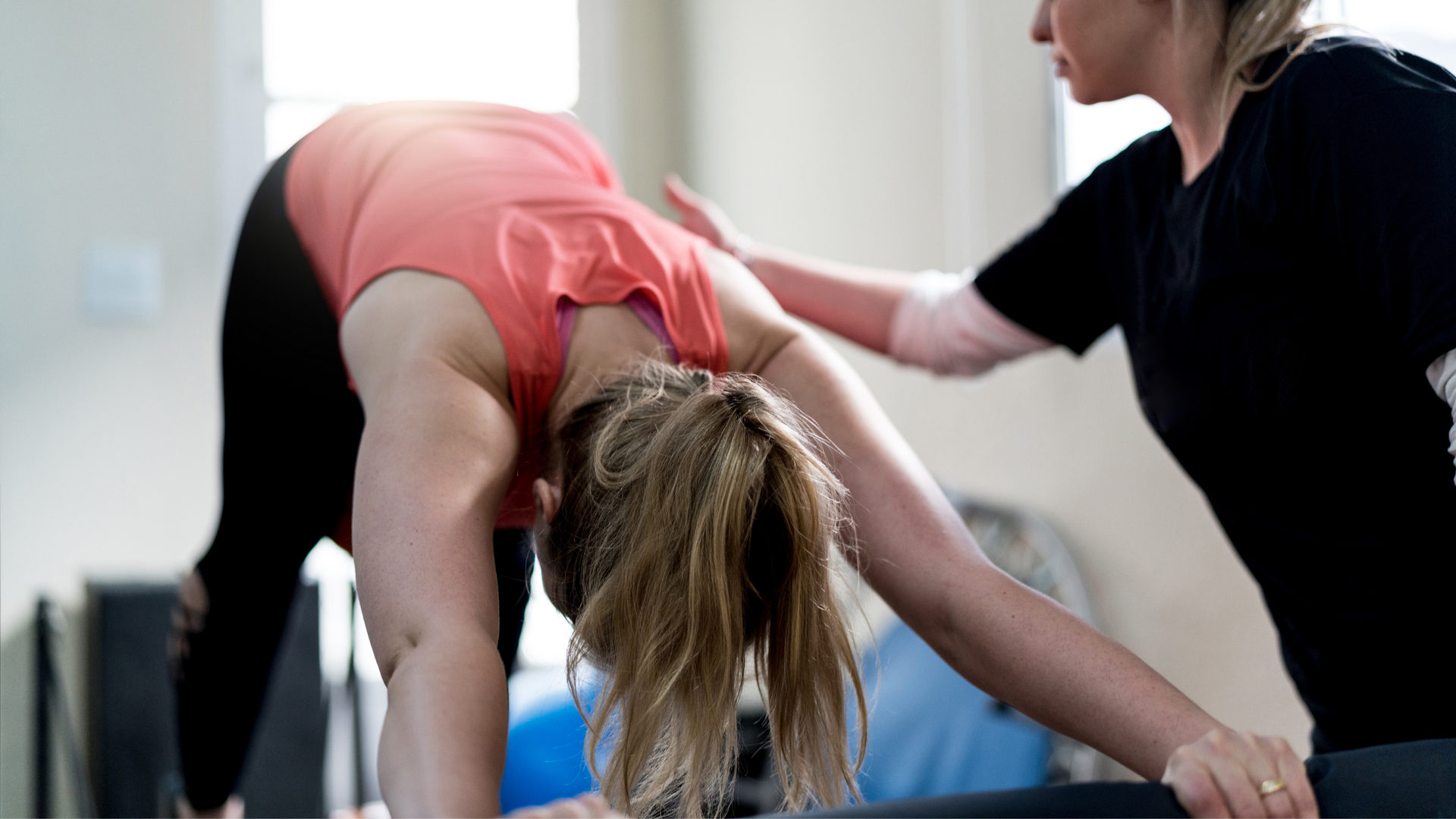Physiotherapy for Parkinson's Disease
Keeping active is critical to slow symptom progression with Parkinson's disease.

Parkinson’s disease (PD) is a complex and progressive disorder characterized by both motor and non-motor symptoms. It is caused by a reduction in dopamine production, a neurotransmitter produced in the brain, and, as a result, altered nerve firing patterns.
Parkinson’s disease is one of the most common progressive neurodegenerative
diseases in the world, second only to Alzheimer’s disease
Parkinson’s disease presents a significant health burden affecting over 150,000 Australians at a cost of about $10 billion annually to our healthcare system. Every year, about 1,100 people under the age of 65 are diagnosed with PD, with only 16% of those on the NDIS. With no known cure, physiotherapy plays a crucial role in maintaining movement, strength, and function for people with PD, and reducing the risk of falls and associated injuries.
What causes PD?
The exact cause of PD is still unknown. What we do know is that for reasons not fully understood, cells in an area of the brain known as the substantia nigra begin to die off. The substantia nigra (along with a couple of other areas in the brain) is responsible for the production of dopamine, a neurotransmitter which, when released into the space between neurons, allows nerve impulses to be propagated – essentially for information to move along nerves.
In the same area that dopamine is secreted (the synaptic cleft) there exists a protein called alpha-Synuclein (pronounced sigh-new-clay-in). The role of alpha-Synuclein is to control the release of neurotransmitters like dopamine. In PD, alpha-Synuclei becomes disrupted and tangled, forming what are known as Lewy Bodies. The result of both cell death in the substantia nigra AND the formation of Lewy bodies is suppression of dopamine release which affects movement, memory, mood, sleep, learning, concentration, movement, and other body functions.
Risk factors for PD
Both environmental and genetic factors exist for PD. Genetic factors were first identified about 20 years ago, and this has opened a whole new world of possibilities for understanding, diagnosing, and treating PD. Environmental factors such as head injury and exposure to pesticides and heavy metals are identified risk factors. Current science indicates that in most cases, genetic and environmental factors interact to cause Parkinson’s disease.
The single biggest risk factor for PD remains advancing age, with men have a somewhat higher risk than women.
While PD is most common in older age groups (60 plus years) there has been an increase in the diagnosis of early onset Parkinson’s disease (those aged under 50), possibly due to better understanding, awareness, and health care access.
Diagnosing PD
Diagnosis of PD is largely clinically based on the presenting signs and symptoms. As symptoms appear gradually over time, it is challenging to accurately diagnose PD in the early stages. Fortunately, over the past 8 years, there have been important developments regarding diagnosis, mainly through medical observation and improved assessment of both motor and nonmotor clinical signs.
The motor (movement) symptoms include:
- Tremor
- Rigidity (stiffness)
- Bradykinesia (slowness of movement)
- Difficulty initiating movement
- Postural instability which can result in reduced balance and increased falls risk.
The nonmotor symptoms include:
- Sleep disorders
- Pain
- Mental health issues such as anxiety and depression
- Gastro-intestinal symptoms
- Sensory impairments such as loss of hearing or smell.
- Cognitive and behavioural changes including dementia
Any or all of these symptoms can reduce quality of life, increase financial burden and have profound social and family effects.
Is a scan required?
Imaging is not specifically required for the diagnosis of PD, however scans such as MRI, CT and PET scans may be used to rule out other conditions.
Management and treatment
There is strong evidence to support a multidisciplinary approach to the assessment, treatment, and management of PD. This will generally include a neurologist (who makes the primary clinical diagnosis of PD), a GP, Physiotherapist, Occupational Therapist, Speech Therapist and Psychologist.
Levodopa and Carbidopa are the most common medications for pharmacological management. Levodopa is converted to dopamine in the brain and assists in controlling movement, while Carbidopa prevents the breakdown of levodopa in the blood stream so that more levodopa can enter the brain.
Surgical intervention such as Deep Brain stimulation can be an option when pharmacological treatment is exhausted.
The role of Physiotherapy in PD
Physiotherapy plays a crucial role in in the management of PD, maintaining functional capacity, slowing symptom progression, reducing falls risk, and improving self-confidence.
Physiotherapy care should be individualised and based on a thorough assessment of your symptoms, goals, and risks.
Recent studies have shown that people with PD spend 75% of waking hours sedentary. Persons with PD are 30% less likely to be active compared to healthy individuals, with only 18% undertaking regular low level physical activity and only 6% engaging in regular moderate to vigorous physical activity.
Physiotherapist directed resistance exercise can improve cardiovascular and brain health, reduce incidence of osteoporosis, build strength and reduce falls risk, and have broader positive effects on physical and mental health, including sleep habits. Manual therapy can delay joint stiffness and the slowing of movement and, combined with exercise, improve balance and reduce falls risk. Movement and cueing strategies can assist with problems related to initiating movement, improve mobility, and reduce sedentary hours.
Exercise type and volume
Therapeutic exercise must be prescribed and individualised and incorporate strengthening (compound) exercises, aerobic exercise, and balance strategies. The goal should be to engage in 30-60mins of targeted exercise every day of varying type and intensity. Where possible programs should include some moderate and high intensity exercise, dependent on individual capacity and risk assessment.
Gym programs, walking, cycling and swimming can all be undertaken by people with PD, depending on your symptoms.
Simple lifestyle changes can make a big difference following a diagnosis of PD. Group yoga and clinical pilates classes are appropriate and effective, as are falls and balance classes. If your lifestyle is already sedentary, undertaking small amounts of light to moderate intensity exercises such as walking, gardening, and stretching is a good start. Hydrotherapy can be effective in early-stage PD, especially when unable to perform land-based exercises. The heated water can reduce pain, and provides buoyancy, hydrostatic pressure, and resistance to effectively reduce stress on the joints, assist with blood flow and strengthen muscles through movement. Learn more about hydrotherapy here.
The Take Home
Parkinson’s disease is a common, progressive neurological disease that affects dopamine production in the brain, causing a range of motor and nonmotor symptoms. A multi-disciplinary approach that incorporates physiotherapy and physiotherapy-directed exercise has been shown to improve health related quality of life for people with PD. By working closely with a physiotherapist, individuals with Parkinson’s Disease can delay symptom progression, improve functional capacity, mitigate falls risk and improve their independence and self-confidence.
Do you have Parkinson's disease and want to effectively manage your symptoms? Give us a call.
At Movement for Life Physiotherapy, we understand Parkinson's disease and can safely assess your symptoms and tolerance to physical activity in a controlled environment. With a clear understanding of your functional capacity and a tailored management plan, we'll help keep you moving and doing all the things you love in life.
Give us a call now or click on BOOK AN APPOINTMENT to book online.
Sources
- Bloem, B.R., Okun, M.S., & Klein, C. (2021). Parkinson’s Disease. The Lancet, 397 (10291), 2284-2303, DOI: https://doi.org/10.1016/S0140-6736(21)00218-X
- Bouça-Machado, R., et al. (2020). Physical Activity, Exercise, and Physiotherapy in Parkinson’s Disease: Defining the Concepts. Movement Disorders. Physical Activity, Exercise, and Physiotherapy in Parkinson's Disease: Defining the Concepts (wiley.com)
- Cristini, J., et al. (2021). The effects of exercise on sleep quality in persons with Parkinson's disease: A systematic review with meta-analysis. Sleep Medicine Reviews, 55, 101384. https://doi.org/10.1016/j.smrv.2020.101384
- Eriksson, B-M., Arne, M., & Ahlgren, C. (2013). Keep moving to retain the healthy self: the meaning of physical exercise in individuals with Parkinson’s disease, Disability and Rehabilitation, 35:26, 2237-2244, DOI: 10.3109/09638288.2013.775357
- Greenland, J.C., & Baker, R. A. (2018). The Differential Diagnosis of Parkinson’s Disease. National Library of medicine. DOI: 10.15586/codonpublications.parkinsonsdisease.2018.ch6
- Latif, S., et al. (2021). Dopamine in Parkinson’s Disease. Clinical Chimica Acta, 522, 114-126. https://doi.org/10.1016/j.cca.2021.08.009
- Mei, J., Desrosiers, C., & Frasnelli, J. (2021). Machine learning for the Diagnosis of Parkinson’s Disease: A review of literature. Frontiers in aging Neuroscience, 13. https://doi.org/10.3389/fnagi.2021.633752
- Shake it up Australia Foundation. https://shakeitup.org.au/. Accessed 26/03/2024.
- Vazquez-Velez, G.E., & Zoghbi, H.Y. (2021). Parkinson’s Disease Genetics and Pathophysiology. Annual review of Neuroscience, 44, 87-108.
- World Health Organization. (2023). Parkinson’s Disease.
Parkinson disease (who.int)
More articles
Our goal is to enable you to live a pain-free life, with full mobility.
Copyright 2020 Physiotherapy





